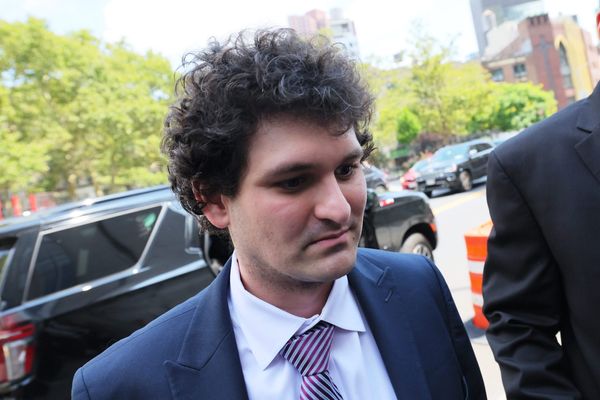
MIZUSAWA, Japan — Los Angeles Angels superstar Shohei Ohtani is often described as a once-in-a century talent, especially for his dual skills as pitcher and hitter.
To understand how Ohtani became such a baseball prodigy, it helps to journey to Ohtani's hometown of Mizusawa, in northern Japan's Iwate prefecture, to see where he got his start in baseball.
Ohtani's Little League team, the Mizusawa Pirates, still practices every weekend at a diamond sandwiched between a country road and a river where salmon swim upstream from the Pacific Ocean.
Ohtani played here in the early 2000s, between the ages of 8 and 14.
"He and his parents came to this field to see me," recalls coach Shoji Asari, who founded the Pirates.
Asari thought that Ohtani might like to join his school's softball team with the rest of his friends.

"But he looked straight into my eyes and said, 'I want to play hardball with this team,'" says Asari. "I thought this boy could make it big, and he gave that impression, but he was very skinny at the time."
Ohtani's capabilities quickly surpassed his teammates'. Batting left-handed, he often hit home runs over the right-field fence and into the river. Asari says the cost of lost baseballs began to add up.
"So I jokingly told him, 'Don't pull your hits, Shohei!'" he recalls. "He shot me a dagger-like look, and then hit his next homer to left field. I think that was when he found the fun of opposite-field hitting."
Ohtani's opposite-field home runs have become a signature of his hitting, including the hardest-hit opposite-field homer by a left-handed hitter since Major League Baseball's Statcast data system began tracking them in 2015. Opposite-field home runs require more power, as the batter swings later and the bat has less time to accelerate.
As a kid, Ohtani also excelled at pitching. He hurled faster fastballs and his sliders curved more than other pitchers'. Not only were they hard to hit, they were also very hard to catch.
"I had never caught a ball from a pitcher who could throw at more than 87 miles per hour," says Ryuki Sasaki, Ohtani's catcher in high school.
He remembers the numerous sprained fingers that the pitches caused. "Also, his slider curves too much," he says, "and my body couldn't react in time. In the beginning, I couldn't catch his pitches at all."
In Japanese, players who excel at both pitching and hitting are called nitoryu, or "two-sword style," a term that recalls the samurai warriors of Japan's past. As in martial arts, Japanese Little League players hone their skills through repetitive drills, and in Ohtani's days, strict discipline often included corporal punishment.

But Coach Asari took an unconventional approach, emphasizing fun over winning games.
"Most Japanese baseball players train hard how to play, suppress their own feelings, be patient and practice exactly as their coach says," explains sports journalist Nobuya Kobayashi, who has written a book about Ohtani. "But Coach Asari let his players grow freely. So Ohtani has continued to enjoy baseball the whole time."
Kobayashi says that anyone who has ever had fun playing baseball as a kid will be reminded of it when they see Ohtani play.
"No matter what the results are for him, his team's victory simply makes him happy," says former catcher Sasaki. "I think even now, he plays with the mind of an elementary school kid who loves baseball."
Many Little Leaguers in Japan are allowed both to hit and pitch, but it is rarer in pro baseball, partly because pitchers need to rest their arms, while hitters may play in every game. Kobayashi says Ohtani's efforts to continue his dual role.
Ohtani wanted to go play in the U.S. straight out of high school, but he consented to remain in Japan to play for the Hokkaido Nippon Ham Fighters, on the condition that he be allowed to both hit and pitch. He played for the team from 2013 to 2017.
Kobayashi says Ohtani succeeded in playing on his own terms, facing down objections.
"Because of the Japanese mentality," he says, "they wanted to believe that the double sword style was impossible, because it had no precedent. Maybe they didn't want someone as extraordinary as Ohtani to emerge."
In another example of how Ohtani's exceptional skills have allowed him to bend or even rewrite the rules of the game, Major League Baseball made it a rule last year that a pitcher can still bat as designated hitter, even after being relieved on the mound. It's called the "Ohtani rule."

Yet some observers, including Asari and Kobayashi, are concerned about the changes Ohtani has undergone since playing in the U.S., and the toll his dual path has exacted.
"It's up to the kids, but really, it's impossible," Asari says of the two swords style. "Even in America, only Babe Ruth could do it. You'd better not do it. You can get injured."
Kobayashi, meanwhile, argues that Ohtani has turned away from the Japanese style of baseball — which emphasizes controlling timing and distance — and adopted the American style, which he says is about power. He believes Ohtani has bulked up too much, and worries he could get hurt.
Ohtani has admitted feeling some fatigue this season, but he leads the Major Leagues in home runs and is among the top five pitchers when it comes to strikeouts.
"He made it big all due to his own efforts. We had nothing to do with it," Asari says modestly of Ohtani's success in the U.S.
Chie Kobayashi contributed to this report in Mizusawa and Tokyo.







